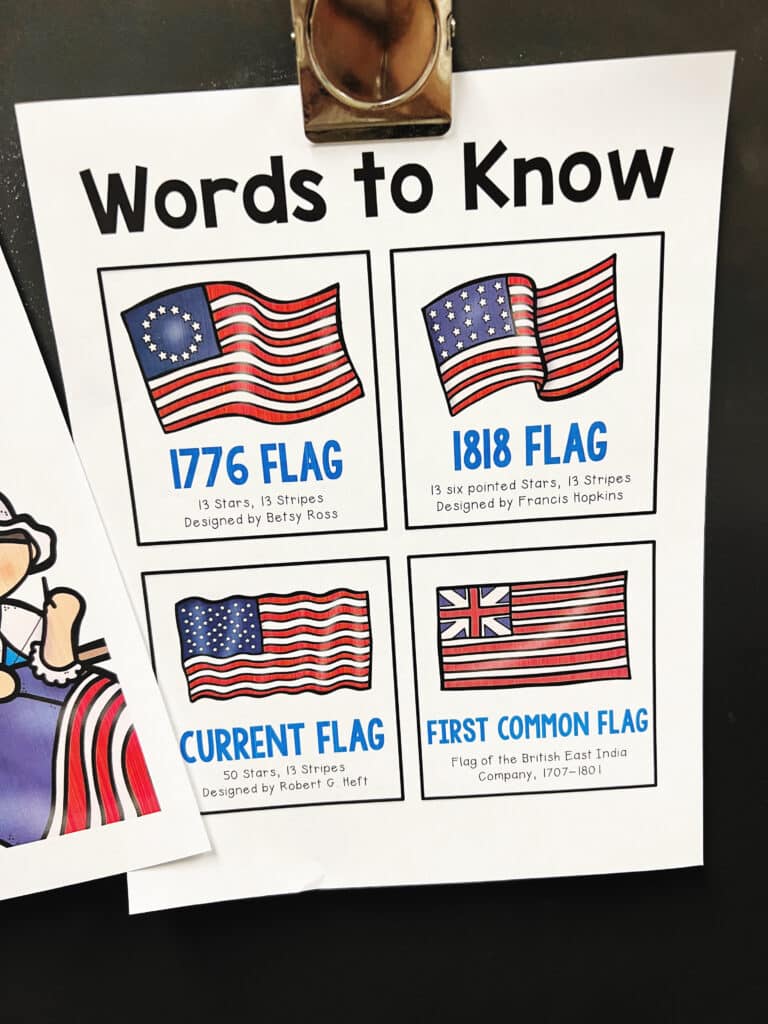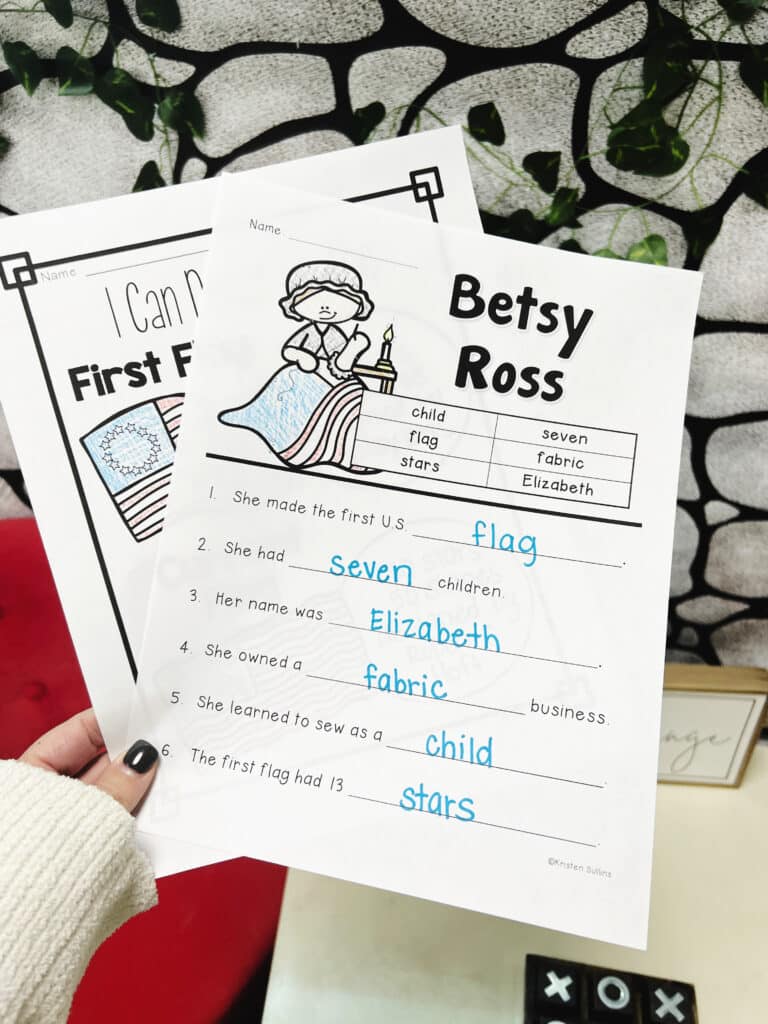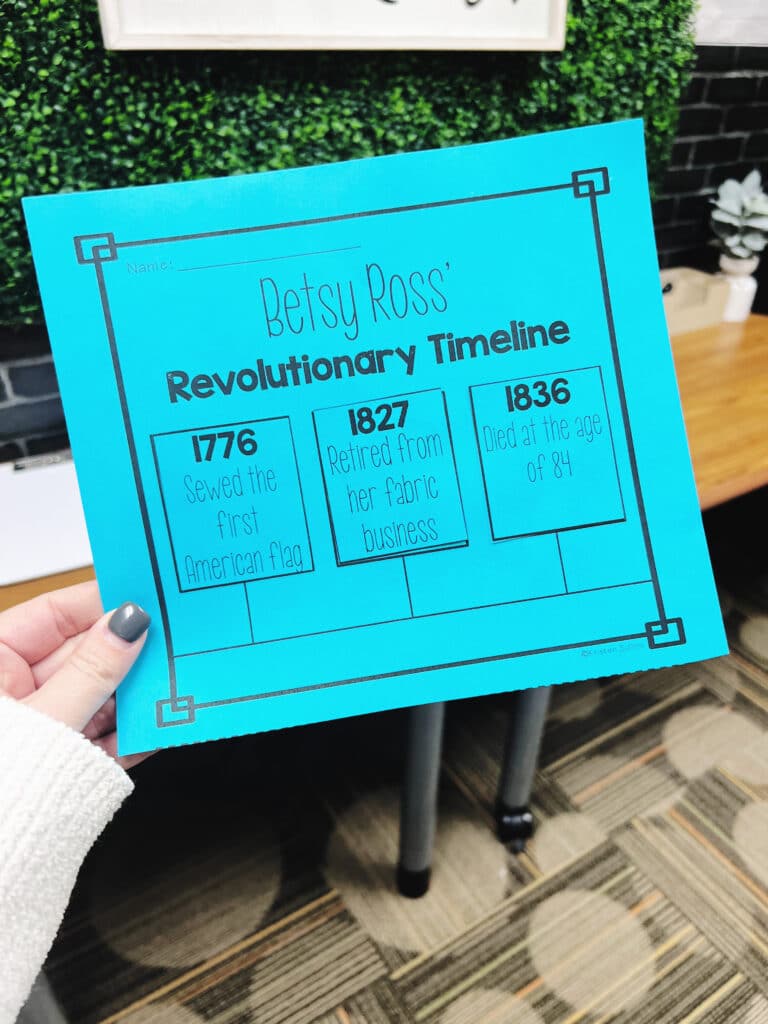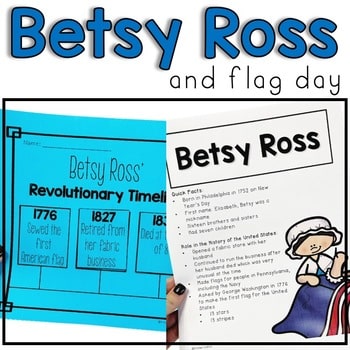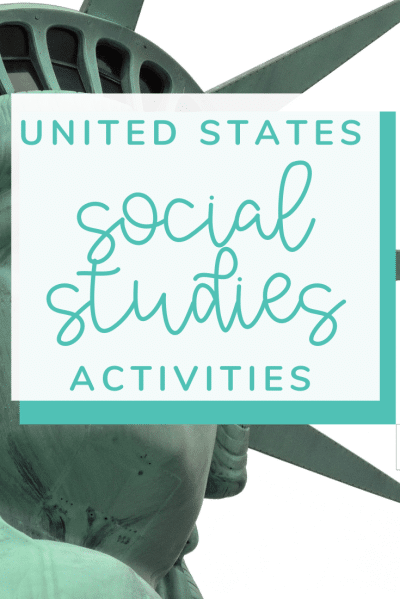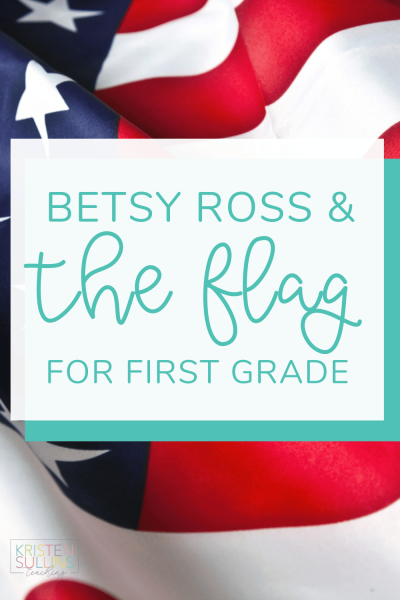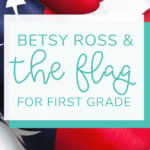We often teach about the pledge of allegiance and the United States flag in first grade, but rarely do we think about the people who created the flag, most famously, Betsy Ross.
When I think of teaching social studies in first grade, I think of teaching people, places and events, but rarely do I use the word “biography”. But in its simplest form, a biography is simply a study of a person, where they lived and what events happened in their life.
After teaching first grade for more than a decade, I’ve realized that biographies in first grade are actually a very powerful tool.
Learning about different people and the struggles and triumphs they encountered is an excellent way to broaden a student’s view to more than just what they know within their family or community.
I’ve also found that first grade students relate a lot more to historical events by learning about the people related to those events or places.
In fact, I would go as far as to say that biographies are a great way to inspire your students to become leaders because they are studying the great impact that even one single person can have on not just a small community, but also the world.
According to the standards set by the State of Texas (TEKS), first grade students should be able to:
- Identify contributions of historical figures, such as Betsy Ross
- Recite the Pledge of Allegiance to the United States Flag and the Pledge to the Texas Flag.
The best part about teaching biographies in first grade is that it is the PERFECT opportunity to go cross-curricular! You can combine your social studies time with reading and writing all throughout your day! In fact, this is one of my number one tips for “fitting it all in”.
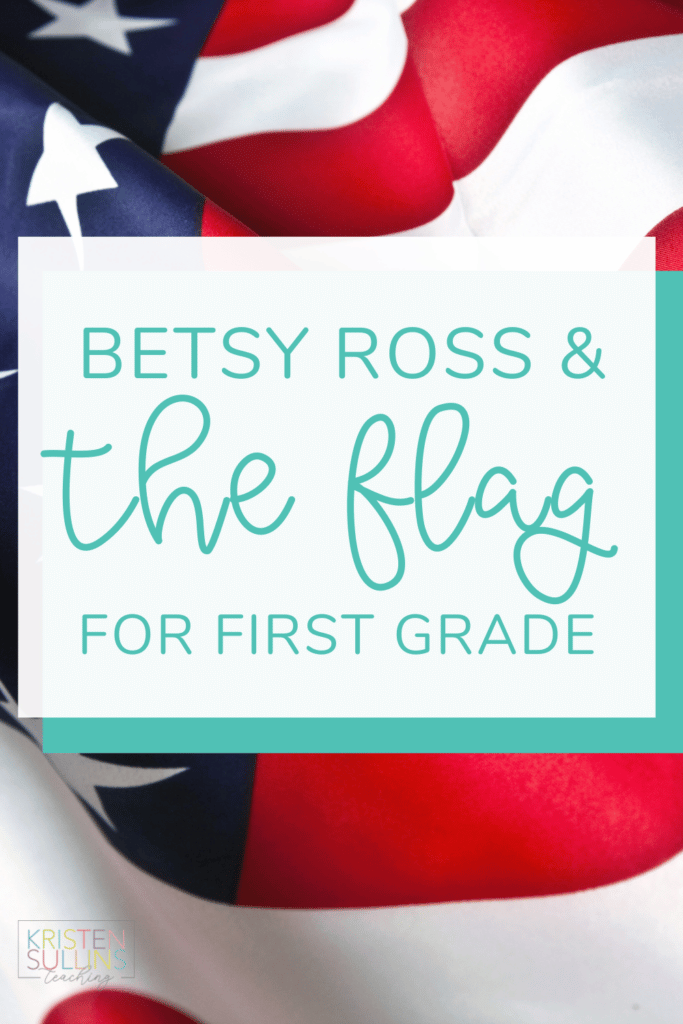
Why Teach a Biography in First Grade?
Citizenship is a major social studies topic in first grade. Every teacher covers the basics of sharing, telling the truth and other good moral values.
However, biographies allow teachers to take it a step further and really teach what it means to be a good citizen and contribute to the community and world around you.
By studying biographies, students can learn about people who are like them, but also people who are very different from them! Learning about different people, in different places and in different circumstances teaches students empathy and understanding.
Betsy Ross and Flag Vocabulary
I always like to kick off my biography units with a short informational poster and vocabulary cards.
I think sometimes students do better when they are giving small chunks of information. Then, on the second day of the biography unit, I will read a book or we will watch a short video (and we continue to do that each day of the biography unit).
I really love these picture cards that show the history of the United States flag. It's such a great visual for our first grade students to see the differences in the United States flags over the years!
I think vocabulary is an important aspect to consider when teaching our first grade students about biographies because their background knowledge probably doesn’t include a lot of the terms they may encounter during their research.
Reviewing vocabulary is also a great way to make comparisons between the current time period and the time period of the person you are studying.
It offers up a great opportunity to talk about tools or items we use and how they have been changed or upgraded by technology over time.
I love the conversations that we have about how hard it was to make a flag by hand and how long it would take to make flags that could be spread across the country!
Facts about Betsy Ross and the United States Flag
First, you will have to teach your first grade students what a biography IS. In its simplest terms, a biography is a factual (true) story about someone's life.
A biography includes true information about a person, their life and their contributions to their community and sometimes even the world.
Students should also understand that biographies can come in many different forms. Most of the time, we read biographies in the form of books. However, there can also be magazine articles, short videos, documentaries/movies or even just an informational poster.
When considering sources for biographies look for the following information:
- Important dates
- Family information
- Early life information (education, etc)
- Career information and special skills
- Significant contributions to society
- Recognition and awards
Betsy Ross Timeline for First Grade
Another skill that Texas says a first grade student should have is the ability to read and understand timelines. For me, this is an excellent skill to tie in with biographies because it helps students understand the events in a person’s life.
I find it beneficial to teach timelines in conjunction with biographies because it saves time by teaching math and social studies at the same time!
I’ve found in my own classroom that cut and paste timelines are especially popular with my first graders. They really benefit from being able to cut the events out and physically place (and glue) them on the timeline.
Not only do they benefit from it, but they also really enjoy it. It’s something a little different from the normal worksheets that are typically associated with “research”.
Other out-of-the-box biography activities that you can try with your first grade students are:
- Journal writing from the perspective of the person
- Write and draw a comic strip about the person’s life
- Make a poster about the person
- Film a video presentation or commercial about the person
Biographies and Writing
Biographies and Writing
I mentioned earlier that I really love to tie my biography units into my daily reading and writing time. Biographies naturally lend themselves to reading comprehension skills but they also offer great opportunities for different types of writing.
The easiest type of writing when it comes to biographies is informational or factual writing. It is very easy to wrap up a biography unit with students writing everything that they learned about a specific person and their contributions to their community.
However, there are also great opportunities for creative writing as well. Take whatever the historical figure is most well known for, and see how you can encourage students to write about their own ideas on the topic.
For example, when we are studying inventors, I like to encourage my students to think about something new that they would like to invent. Then we practice our creative writing by describing the new invention, what it looks like, how it works and the process for creating it!
If we are studying civil rights leaders, then I encourage my students to think about ways they can influence others to be positive and foster equality for all people. Then we practice our creative writing by describing ways that people can help each other.
The writing opportunities that come along with studying biographies are endless! You just have to get creative with them!
Biography Activities for First Grade
Look no further for a quick and easy way to celebrate flag day by exploring the life of Betsy Ross and her contributions to the United States flag!
This all in one download provides key facts about Betsy Ross’ life and revolutionary war contributions. Complete with independent worksheets and writing pages, this unit has everything your students need to learn about Betsy Ross!


